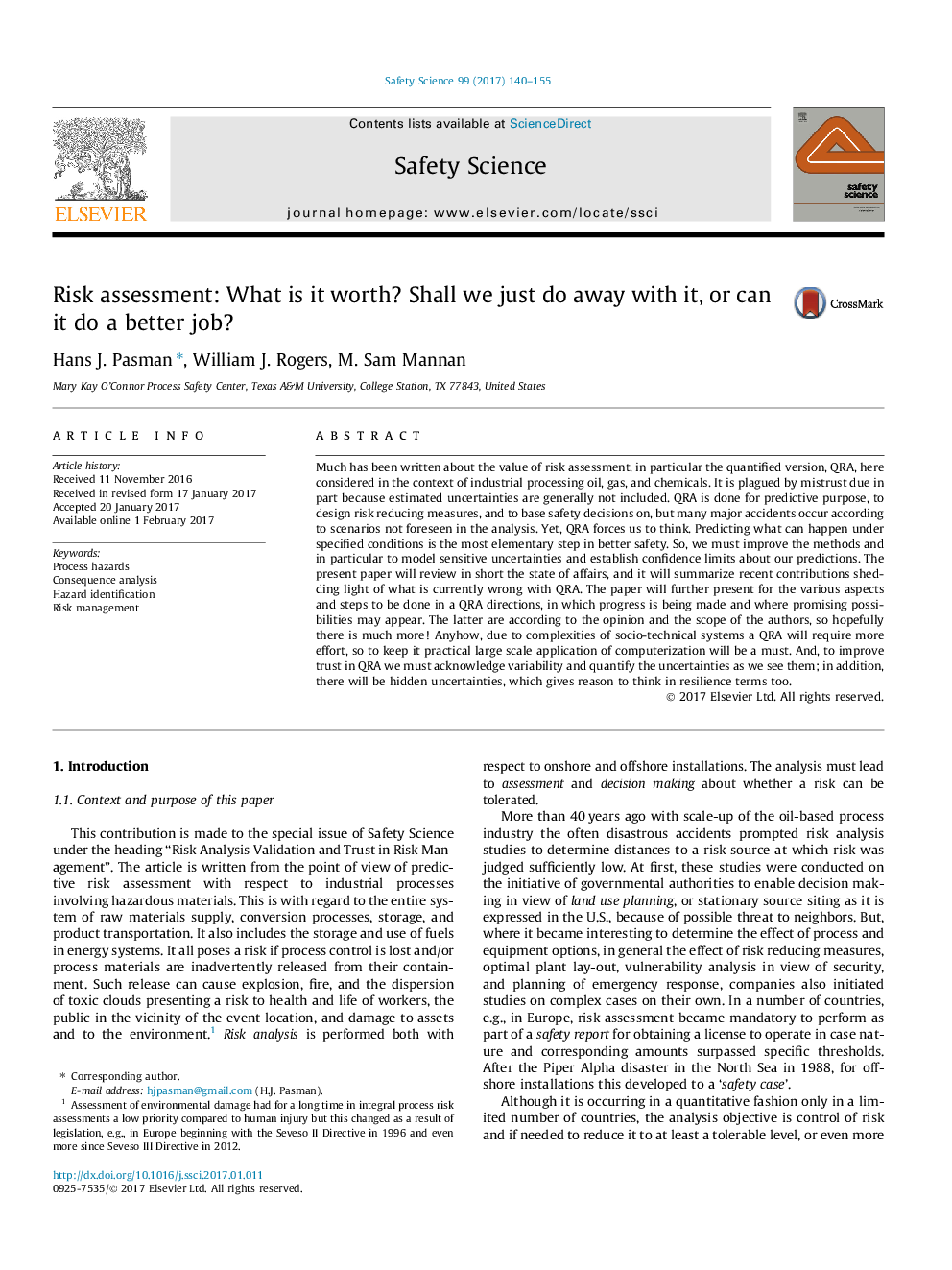| Article ID | Journal | Published Year | Pages | File Type |
|---|---|---|---|---|
| 4981165 | Safety Science | 2017 | 16 Pages |
Abstract
Much has been written about the value of risk assessment, in particular the quantified version, QRA, here considered in the context of industrial processing oil, gas, and chemicals. It is plagued by mistrust due in part because estimated uncertainties are generally not included. QRA is done for predictive purpose, to design risk reducing measures, and to base safety decisions on, but many major accidents occur according to scenarios not foreseen in the analysis. Yet, QRA forces us to think. Predicting what can happen under specified conditions is the most elementary step in better safety. So, we must improve the methods and in particular to model sensitive uncertainties and establish confidence limits about our predictions. The present paper will review in short the state of affairs, and it will summarize recent contributions shedding light of what is currently wrong with QRA. The paper will further present for the various aspects and steps to be done in a QRA directions, in which progress is being made and where promising possibilities may appear. The latter are according to the opinion and the scope of the authors, so hopefully there is much more! Anyhow, due to complexities of socio-technical systems a QRA will require more effort, so to keep it practical large scale application of computerization will be a must. And, to improve trust in QRA we must acknowledge variability and quantify the uncertainties as we see them; in addition, there will be hidden uncertainties, which gives reason to think in resilience terms too.
Related Topics
Physical Sciences and Engineering
Chemical Engineering
Chemical Health and Safety
Authors
Hans J. Pasman, William J. Rogers, M. Sam Mannan,
